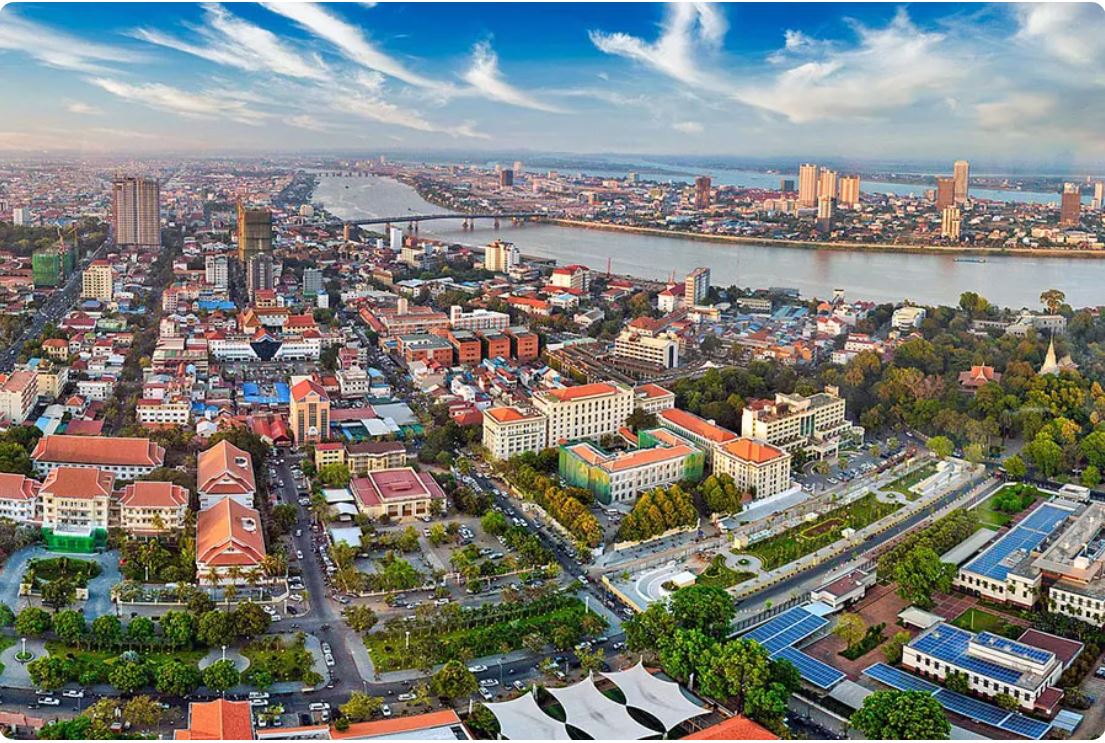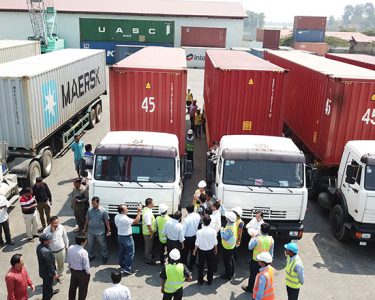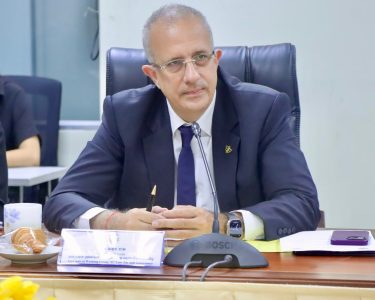Pen Navith
Cambodia’s bold ambition to become a high-income nation by 2050 now faces mounting uncertainty, as global disruptions, regional tensions, and domestic vulnerabilities put the country’s long-term vision to the test.
After enjoying strong economic growth from 1995 to 2019 and reaching lower-middle-income status in 2015, Cambodia set its sights on advancing to upper-middle-income status by 2030 and achieving high-income status by 2050. Yet the path forward looks increasingly complex.
The lingering effects of COVID-19, the economic fallout of the Russia–Ukraine war, Trump-era tariffs, and the unresolved Cambodia–Thailand border dispute have all cast doubt on whether Cambodia can realistically stay on track with its Vision 2050 goals.
In today’s unpredictable and rapidly changing world, making confident forecasts is difficult. Much depends on the lens through which the question is asked—whether from the viewpoint of politicians, economists, or social observers.
Politically, Cambodia may well declare victory in meeting its long-term goals, regardless of widening inequality or the number of citizens left behind. But for a more grounded assessment, one must look closely at the country’s current economic and social realities, including the pressing internal and external challenges that could determine whether Cambodia’s aspirations remain achievable—or slip further out of reach.
Cambodia’s Economic Overview
As has been said, more than two decades after Cambodia concluded its most protracted and devastating civil war, achieving complete peace in 1998 and joining ASEAN in 1999, Cambodia’s gross domestic product (GDP) had grown significantly with an average 7.6% annually from 2009 to 2019.
This figure has been driven largely by sectors: industry (garment, non-garment manufacturing), which accounts for 38 percent, followed by services (tourism, real estate & construction), and agriculture, which accounts for 21 percent. As a result, Cambodia is one of the fastest-growing economies in Asia and the world.
Read More: Cambodia to Host First-Ever Legends Tour Event at Vattanac Golf Resort
Through this remarkable achievement, fueled optimism that Cambodia could climb further up the ladder to reach an upper-middle-income status by 2030, and subsequently move forward to achieve Cambodia’s Dream 2050. To achieve these dreams, Cambodia needs to maintain economic growth at an average of around 7 percent annually, ensure poverty reduction to below 10 percent of the national poverty line, create more jobs for Cambodian people, particularly for youth, implement public institutional reforms, and ensure sustainable socio-economic development.
An undeniable fact is that when the global economy faces crises, it creates ripple effects to almost every country around the world, leading to a reduction in trade, investment, jobs, and growth, while increasing poverty, unemployment, debt, inflation, and inequality.
Cambodia, meanwhile, confronts both external and internal threats that strike at its social and economic growth and, to some extent, could hold back the country’s Vision 2050. As an early sign of these impacts, the country lowered its GDP growth for 2025 from 6.3 percent, as initially forecasted earlier this year, to 5.2 percent.
External Threats to the Country’s Dream 2050
First and foremost, never in Cambodia’s 20-year history had the country experienced such a dramatic economic downturn, with GDP contraction of 3.1 percent in 2020. The COVID-19 pandemic precipitated this substantial decline.
Today, Cambodia’s economy is continuing to recover slowly, growing at 3.1 percent in 2021, and an average of more than 5.3 percent between 2022 and 2024, primarily driven by three key sectors, such as industry (garment & non-garment manufacturing), 40.4 percent, followed by services (tourism, real estate & construction) 38.6 percent and agriculture, 21.1 percent.
Secondly, it came at a point when the country had been struggling to recover after two years of being sucked into the COVID-19 pandemic, yet another threatening storm has come, the Russia-Ukraine War. As stated above, the global economy is interconnected, and since Russia is the world’s second-largest crude oil exporter, any sanctions on Russia affect not only European countries but also international markets.
As one of the energy-importing countries, Cambodia has faced rising fuel prices, which have led to increasing inflation. Moreover, the country’s key industries, such as garment and tourism, have also been affected, as the war has led to a rising cost of living, increased commodity prices, and disruptions in global supply chains of goods and services.
Thirdly, the United States is Cambodia’s largest export market, with export value at roughly $10 to $12 billion in 2024, accounting for 30 percent of GDP, mostly garments, footwear, and travel goods, while imports from the U.S. were nearly $300 million.
This indicates that Cambodia maintains a large trade surplus with the U.S. However, Trump’s tariff policy threatened this advantage. A 19 percent tariff, though less damaging than the previous 36 percent, would still affect Cambodia’s competitiveness, potentially reducing GDP growth by 0.5-1 percent, or around $1-1.5 billion in lost export revenue compared to the duty-free access Cambodia previously enjoyed.
Last but not least, why is it called an uncertain world? Because things happen unexpectedly and unpredictably. Indeed, events that Cambodia did not even expect have happened, the Cambodia-Thailand border dispute, which led to the closure of all border checkpoints, five days of bloody clashes resulting in more than 40 casualties, and the displacement of more than 300,000 people on both sides.
The conflict has resulted in being lost, while around 900,000 Cambodian migrant workers lost their jobs and incomes as they decided to leave Thailand due to increasing discrimination, insults, and even violence by the Thai ultra-nationalists.
Internal Threats to the Country’s Dream 2050
Firstly, the lack of human capital and skilled workers, along with high unemployment, poses a major challenge to Cambodia’s future. In 2019, 88.3 percent of the employed population (7.9 million) worked in the informal sector, while only 11.7 percent worked in the formal sector. Among working-age people (15 years and older), 0.8 percent were unemployed, 30.7 percent or 3.5 million were not in the labour force, and 12.7 percent or 341,272 of youths were not in employment, education, or training.
Based on this data, the situation may have changed by 2025, either increasing or decreasing. It can be interpreted that over 400,000 Cambodians are unemployed or actively seeking jobs domestically, while more than 700,000 returning migrant workers are competing for only about 200,000 jobs available.
Secondly, while GDP is expected to grow slightly faster, averaging around 5 percent in 2025 and 2026, and domestic demand is also expected to increase, driven by an improved job market and stable inflation, the recovery remains incomplete. This is because poverty remains high, with 17.8 percent of the population below the national poverty line, and household debt has surged to $16 billion in 2023, nearly half of GDP, which is about 50 percent of income going to debt service.
At the same time, real estate and construction sectors have slumped, with total house sales and occupancy rates dropping by 18 percent and 60 percent, respectively, in 2024, which has limited domestic consumption. This is a matter because two-thirds of the country’s GDP comes from domestic spending, and around 10 percent contributed by the real estate and construction sector.
Thirdly, tourism has been one of the key of drivers of the country’s economy contributing about 10 percent of GDP and providing more than 500,000 jobs. In recent years, the sector has come under serious threat as Cambodia’s reputation has been battered by the rapid spread of cyber-scam operations. International headlines and politically charged media from neighboring countries have painted the nation as a hub for scam centers in Southeast Asia.
While scam networks are a global challenge that demand coordinated action, Cambodia has been placed under the harshest spotlight. Reports suggest that as many as 100,000 people have been forced into cyber-fraud schemes, with more than 50 call centers uncovered across the country. Although the government has rejected these allegations, sweeping crackdowns are already underway.
Lastly, there is a viral Gen Z joke in ASEAN countries, saying, ‘In ASEAN, we are divided by borders, and united by corruption.’ It is incorrect to say Cambodia is the most corrupt country, but it is untrue to say that Cambodia is not corrupt. According to Transparency International, in 2024 Cambodia scored 21 out of 100 and ranked 158 out of 180, indicating that corruption remains a critical concern in the country.
In Cambodia, corruption is like a cancer, systematically embedded in the society from top to bottom. It has created a wide inequality gap between the families of high-ranking officials and ordinary Cambodian citizens across several areas, particularly education and job opportunities.
The Way Forward
Another undeniable fact is that if the country’s GDP growth persists at around 5 percent, it may miss its timeline, requiring several more years. Nevertheless, to achieve its vision 2030 and 2050 Cambodia needs two priority things: a resilient economy, and political stability. Without political stability, the country would not have come this far. Since 1998, the country has not experience political instability, yet it has continued to struggle with its economy and social equity.
In order to build a long-term resilient economy, the country must first strengthen its human capital both quality and productivity, which require a strong education system supported by high-quality staff or teachers, a strategy successfully implemented in Singapore since the 1960s-70s.
Additionally, with support from the new airport, canal, and deep-sea port, further expanding trading partners and tourist markets, diversifying exported products, and focusing on local processing of agricultural products (e.g., cashew nut, cassava, rubber), are key steps that need to be implemented.
To safeguard political stability, Cambodia must place social equity at the center of its governance. That means confronting corruption and nepotism head-on while designing policies that recognize people’s different starting points, needs, and barriers.
Extra support must be directed where it is needed most so that every Cambodian—regardless of background—can fairly access education, healthcare, economic opportunities, social protection, and full participation in legal and political life. Achieving this requires systematic institutional reform, a process that has already begun.
In the short term, the government also faces the pressing challenge of supporting returning migrant workers. Immediate steps should include: (1) integrating skilled workers into key sectors such as construction, manufacturing, retail, agriculture, and services; (2) providing social protection programs in education and health, alongside subsidies for basic living expenses such as housing, electricity, and water, as more than 30 percent of returnees are burdened with debt; and (3) allocating funds for upskilling low-skilled workers to meet the rising demand from new investments and to prepare them for overseas employment opportunities.
Regarding border disputes, while now may not be the right moment to pursue border demarcation, implementing and respecting a ceasefire agreement is essential to restore peace and rebuild mutual trust. Cambodia and Thailand are not only ASEAN partners but also neighbors bound by shared borders, cultures, and trade ties. Rebuilding trust, enhancing cooperation, and resuming trade would bring tangible benefits to both peoples and lay the foundation for sustained economic growth.
Navith Pen holds a Bachelor’s in International Relations and a Master’s in Public International Law. His research interests focus on public policy related to sustainable and inclusive development, marginalized groups, Society and Economics, as well as small states foreign policy. This article was originally published in Cambodianess.





